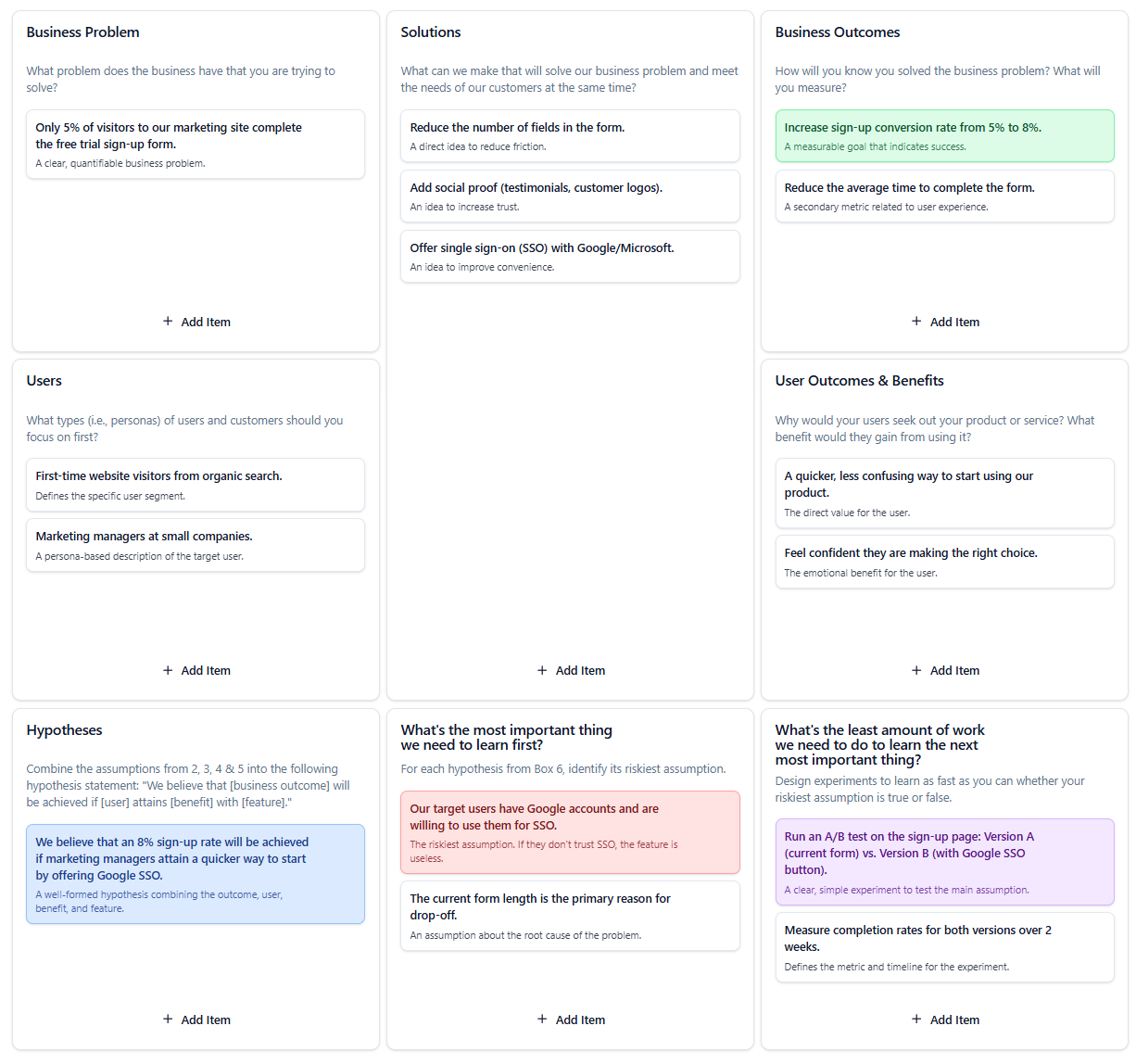Product & Innovation
SaaS Sign-up Conversion
A Lean UX canvas for a team tasked with improving the conversion rate of their free trial sign-up page.

Analysis & Interpretation
Background
This Lean UX Canvas tackles a classic and critical business problem: a low conversion rate on a free trial sign-up page. The canvas structures the team’s thinking around a clear metric and a testable hypothesis.
Key Strategic Insights
- Clear Line from Problem to Outcome: The canvas shows a direct, quantifiable link between the ‘Business Problem’ (5% conversion) and the ‘Business Outcome’ (increase to 8%). This focus on a single metric provides extreme clarity for the team.
- Hypothesis-Driven Solution: Instead of just jumping to a solution, the team forms a specific ‘Hypothesis’ that connects a user (‘marketing managers’), a benefit (‘a quicker way to start’), and a feature (‘Google SSO’). This makes the idea testable and measurable.
- De-risking through Experimentation: The canvas correctly identifies the ‘Riskiest Assumption’ (that users will trust SSO) and defines a simple, cheap ‘Experiment’ (an A/B test) to validate it. This is the core loop of Lean UX: moving from assumption to learning as quickly as possible.
Strategic Summary
This is a perfect example of the Lean UX process in action. The canvas provides a robust framework for identifying a problem, formulating a testable hypothesis, and designing a lean experiment. The team’s next step is to run the A/B test as defined. Regardless of the outcome, they will have learned something valuable about their users that will inform their next move.
How This Was Built
This canvas showcases how a SaaS business can analyze and improve its sign-up funnel using AI-powered insights and visual clarity.

AI-Powered Funnel Mapping
The AI Ideation Tool helped outline user acquisition steps, highlighting opportunities to reduce friction in the Awareness and Conversion stages.

Visual Grouping for Key Metrics
Colors separated marketing, product, and behavioral data, while tags marked hypotheses about drop-off points and conversion triggers for future testing.

AI Analysis on Bottlenecks
After completing the structure, the AI Conversion Review suggested focusing on the Onboarding Experience and Pricing Page as priority areas for A/B testing.
Bring This Example to Life
Load this canvas into the workspace to simulate your funnel flow, identify barriers, and experiment with AI insights that help boost conversion rates.
